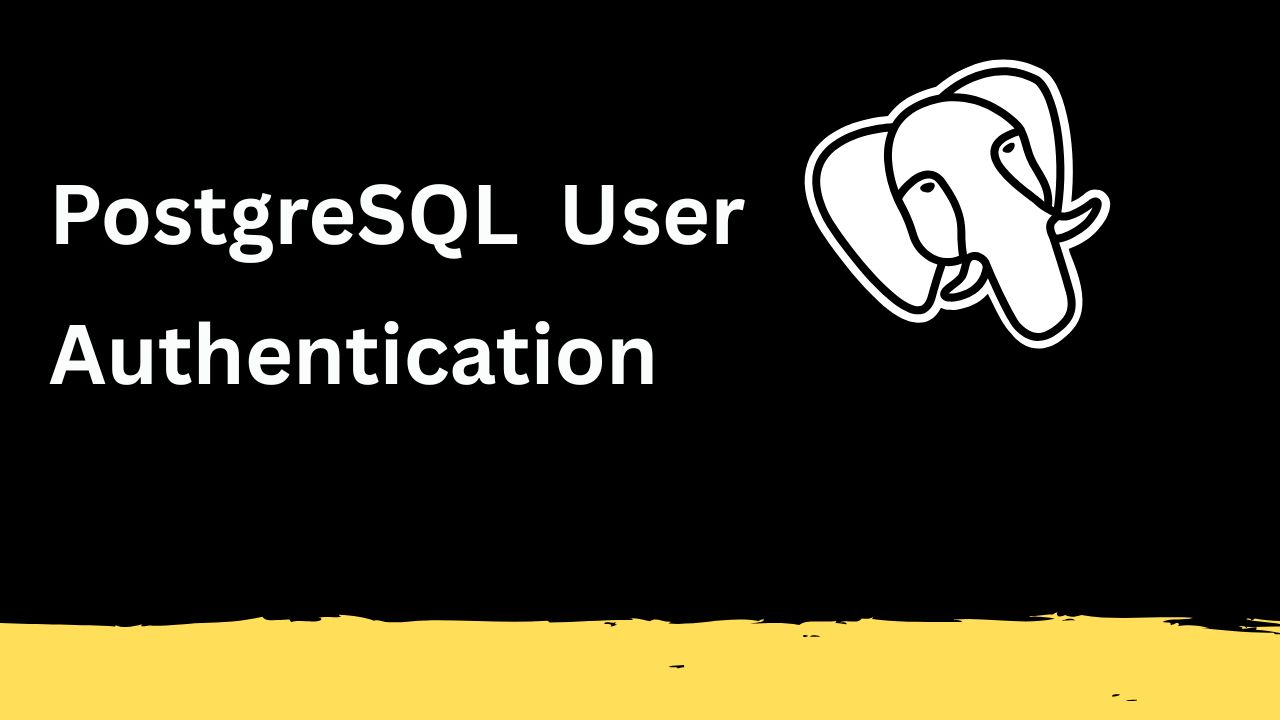PostgreSQL User Authentication
Introduction
When it comes to database security, user authentication and access control form the first line of defense.
PostgreSQL, being one of the most secure open-source databases, provides robust mechanisms to manage users, roles, and permissions — ensuring only authorized users can access or modify data.
Common Authentication Methods in PostgreSQL
1 . Password Authentication (md5 or scram-sha-256)
This is the most widely used authentication method.
-
Users must provide a username and password when connecting.
-
PostgreSQL verifies this against credentials stored in the system catalog.
There are two main password-based options:
md5:
-
Uses MD5 hashing for password storage and transmission.
-
Now considered less secure due to hash vulnerabilities.
scram-sha-256:
-
Introduced in PostgreSQL 10+.
-
More secure because it uses SHA-256 hashing and salt-based protection.
-
Recommended for all production environments.
Example configuration:
2 .Trust Authentication
-
The simplest (but least secure) method.
-
Allows users to connect without a password.
-
PostgreSQL simply “trusts” the incoming connection.
✅ Use case:
-
Suitable only for local testing, development, or air-gapped environments.
Not recommended for production.
Example:
3 . Peer Authentication
-
Works for local Unix/Linux connections.
-
PostgreSQL checks whether the operating system username matches the database username.
-
No password is needed — access is controlled by the OS.
✅ Use case:
-
Useful for local system automation or admin scripts running under specific OS accounts.
Example:
4 . Ident Authentication
-
Similar to peer authentication, but used for remote connections.
-
PostgreSQL queries an external Ident server to verify the username of the connecting host.
✅ Use case:
-
Secure internal networks where Ident servers are configured to validate user identity.
Example:
5 . LDAP (Lightweight Directory Access Protocol)
-
Enables authentication through a centralized LDAP directory (e.g., Active Directory or OpenLDAP).
-
PostgreSQL delegates authentication to the LDAP server.
✅ Use case:
-
Enterprise environments with many users.
-
Simplifies user management — no need to create each PostgreSQL user manually.
Example configuration:
Tip:
You can integrate LDAP with SSL/TLS for encrypted authentication.
6 . GSSAPI (Generic Security Services API)
-
Supports Kerberos-based single sign-on (SSO) authentication.
-
Clients authenticate to PostgreSQL using a Kerberos ticket, not a password.
✅ Use case:
-
Secure, enterprise-grade environments where users are already managed via Kerberos.
-
Common in organizations using centralized authentication (like Active Directory).
Example configuration:
How it works:
1 . The client obtains a Kerberos ticket from the Key Distribution Center (KDC).
2 . The client presents this ticket to PostgreSQL.
3 . PostgreSQL verifies it using the KDC — no password exchange happens.
7 . SSPI (Security Support Provider Interface)
-
Windows-specific authentication mechanism.
-
Essentially the Windows version of GSSAPI, allowing integrated Windows authentication.
✅ Use case:
-
PostgreSQL running on Windows Server environments.
-
Allows users to connect using their Windows credentials without entering passwords.
Example:
Benefits:
-
Seamless authentication for Windows domain users.
-
Eliminates password management overhead.
Conclusion:
At Learnomate Technologies, we make sure you not only understand such cutting-edge features but also know how to implement them in real-world projects. Whether you’re a beginner looking to break into the database world or an experienced professional upgrading your skillset—we’ve got your back with the most practical, hands-on training in Oracle technologies.








Let’s keep learning, exploring, and growing together. Because staying curious is the first step to staying ahead.
Happy learning!
ANKUSH


